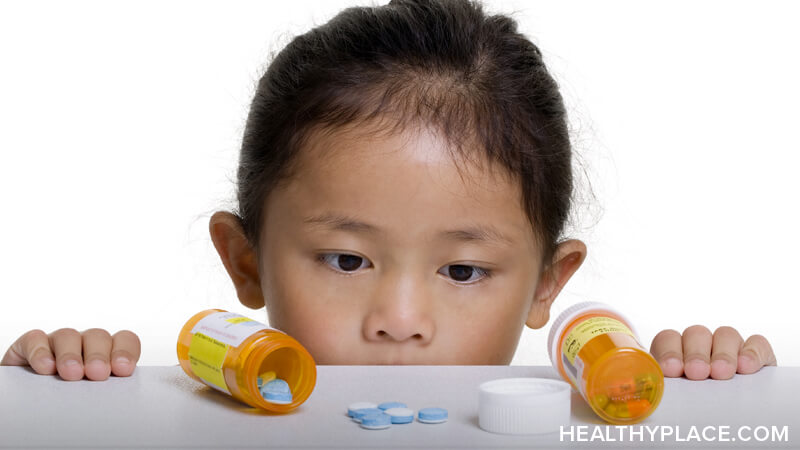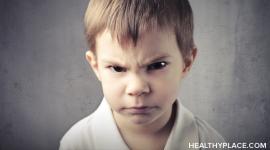Mood Stabilizers for Kids: Are They Safe and Effective?

Can mood stabilizers for kids ever be safe, and are they recommended? Adolescence and early adulthood is the most common time for bipolar onset, but what about children with bipolar disorder? Although we often hear about the disorder developing in adults, bipolar disorder can occur in children of any age. Early treatment can help manage a child’s bipolar symptoms, prevent or delay episodes and decrease the impact of mental health problems in later life. Mood stabilizers for kids are just one of the available options for child-onset bipolar disorder, but they are the most commonly prescribed. Here, we’ll examine the safety and effectiveness of mood stabilizers in children and dispel some common myths.
Mood Stabilizers for Kids: Do They Need Them, and Are They Safe?
Mood stabilizers for kids can be safe as long as a licensed medical professional prescribes them and the child’s health is carefully monitored. If you believe your child is showing signs of bipolar disorder, your physician will run a series of psychiatric tests and physical exams to rule out other causes of his or her symptoms. Your child will then most likely be referred to a child psychologist or psychiatrist who specializes in mood disorders in children.
Mood stabilizers for kids include:
- Lithium (Lithobid)
There is limited research into this area, but findings show that lithium is safe and may be effective in treating the symptoms of bipolar disorder in children and adolescents.
- Carbamazepine (Carbatrol, Equetro)
Carbamazepine is known to be effective as a mood stabilizer in children and teenagers with bipolar disorder. It is also used as an anticonvulsant.
- Sodium valproate (Depakote)
Limited studies show that sodium valproate is safe and effective in reducing symptoms of mania in children with bipolar disorder.
If your child’s symptoms are severely impacting his or her life, or if your doctor believes they pose a risk to your child’s safety, a mood stabilizer may be prescribed. Other, less common forms of treatment for bipolar disorder in children include antipsychotic medications, antidepressants and antipsychotic-antidepressant combinations. Your child may also be referred for talking therapy and closely monitored.
What are the indications of bipolar disorder in children?
As in adults, the symptoms of bipolar disorder in children include mood “swings” from hyperactivity and mania to depression. Because children are prone to emotional highs and lows in their early years and during times of hormonal and environmental change (e.g., starting school or going through puberty), bipolar disorder can be difficult to identify. What’s more, several other childhood disorders can cause bipolar-like symptoms, including anxiety disorders and attention deficit disorders (ADHD).
Symptoms of bipolar disorder in children are similar to the signs we see in adults. However, young children may be more irritable than adults when experiencing mania, and they are more likely to have symptoms of psychosis – such as hearing or seeing things that aren’t real. Bipolar depression in children may present in physical symptoms such as general aches and pains, as well as low mood, feelings of hopelessness and loss of interest in once-enjoyed activities.
Bipolar disorder in children also cycles more quickly. While adults tend to experience "episodes" that last for weeks, months or years, in children, multiple episodes can occur within a single day.
What are the age recommendations for mood stabilizers for kids?
Mood stabilizers have primarily been developed for and tested on adults, and there is no set age recommendation for any drug. Many of these medications are not officially approved for children and teens, though professional guidelines direct their use for child-onset bipolar disorder. The FDA approves lithium for the treatment of manic symptoms in children aged 12 and over.
Mood Stabilizers in Children: What Are the Side-Effects?
Side-effects of mood stabilizers in children are similar to those experienced in adults, although not everyone has them. Your child may experience nausea and vomiting, skin rashes, slurred speech, changes in vision or hallucinations. All side-effects should be noted and reported to your child’s doctor.
Children who take mood stabilizers appear to be more prone to side-effects such as weight gain and changes in blood sugar. If your child is prescribed a lithium carbonate medication, they will need to have regular blood tests (about once every two weeks initially) to measure the lithium levels in the blood and monitor kidney function, as high levels of lithium in the blood can be life-threatening. Some non-prescription medications can increase lithium levels, so make sure you check with your doctor before giving your child any over-the-counter medications while they are taking mood stabilizers.
APA Reference
Smith, E.
(2021, December 28). Mood Stabilizers for Kids: Are They Safe and Effective?, HealthyPlace. Retrieved
on 2026, January 3 from https://www.healthyplace.com/bipolar-disorder/bipolar-children/mood-stabilizers-for-kids-are-they-safe-and-effective



